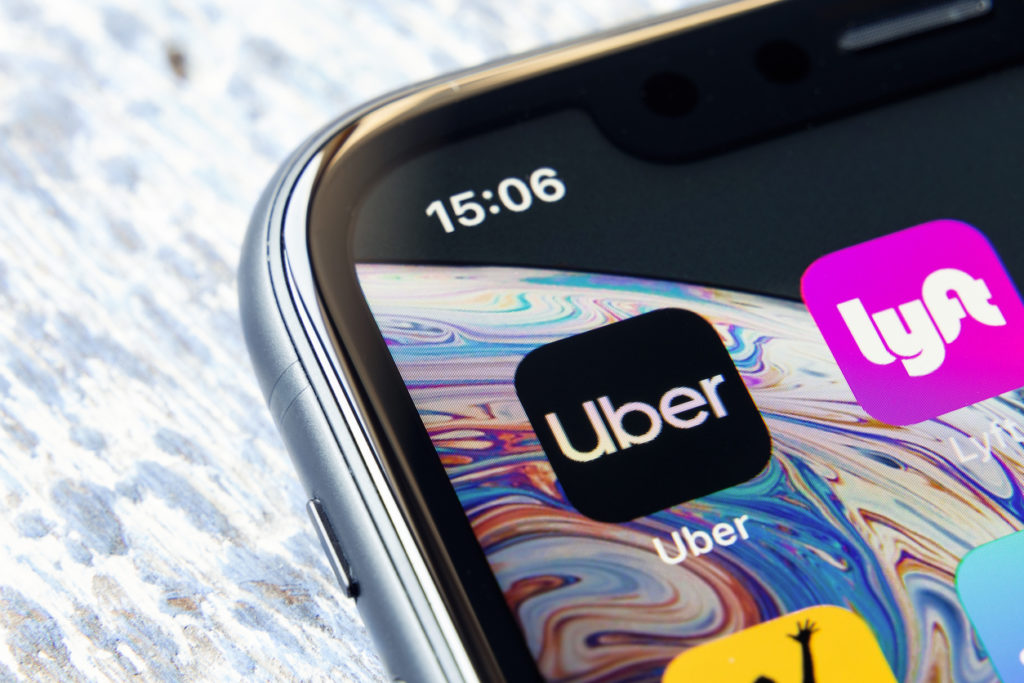- News
- What are the Requirements to be an Uber or Lyft Driver?
What are the Requirements to be an Uber or Lyft Driver?

Driving for a rideshare service like Uber and Lyft is appealing to many because these services make earning money as a driver so accessible—just about anyone can be a rideshare driver. But this accessibility can also be concerning for riders, as they have no guarantee that the stranger behind the wheel is being as safe as possible. In addition to displaying driver ratings by previous passengers, both Uber and Lyft guarantee that drivers using their services have met certain standards. In this article, we will cover what these requirements are and other related safety concerns riders may have.
Are Rideshare Drivers Trained?
Uber and Lyft drivers are not required to have a chauffer’s license or any other certificate that proves further training beyond what is required to secure a driver’s license in their state, but do they receive training from their rideshare service provider? Largely, no.
While Uber drivers are required to learn how to use the app and GPS navigation and Lyft drivers have to watch a series of six videos (20 minutes total) as safety training, these services do not require or conduct any training on how to safely operate a vehicle or defensive driving for their prospective and current drivers.
Driver Requirements
Though rideshare drivers are mostly untrained, they are required to meet certain standards, including the following:
For Uber nationwide
- Meet the age requirement for your region (21 for Michigan)
- Have at least one year of licensed driving experience in the US (3 years if you are under 25 years old)
- Have a valid US driver’s license
- Proof of residency in your city, state, or province
- A driver profile photo
- Pass a driver’s screening that reviews your driving record and criminal history
- Have a phone that can download and run the Uber driver app
What is the Process for an Uber Driver Screening?
Becoming a driver for a ride-sharing service involves a few key steps to ensure both rider and driver safety. Here’s what you can expect during the screening process:
- Application Submission: Start by filling out an online application with your personal details, including your driving history and criminal record.
- Background Check: A thorough review of your driving record is conducted. This checks for any accidents or traffic violations to ensure you’re a safe driver. Past criminal activity is also evaluated as part of a comprehensive background check.
- Document Verification: You’ll need to provide documentation such as a valid driver’s license, proof of vehicle insurance, and vehicle registration. These help confirm your eligibility to drive legally.
- In-Person Vehicle Inspection: Often, your vehicle will be subject to an inspection to make sure it meets service standards, such as cleanliness and general safety.
- Ongoing Compliance: Once approved, maintaining a good driving record and adhering to company policies are essential to continue providing rides.
By going through these steps, companies ensure that their drivers are qualified, responsible, and able to provide a safe and pleasant experience for all riders.
- Be at least 25 years of age
- Have a valid driver’s license — Temporary or out-of-state licenses are also acceptable.
- Pass a driver screening that reviews your driving record and criminal history.
- Have a phone that can download and run the Lyft driver app
Vehicle Requirements
Becoming a driver for Lyft involves a few important steps to ensure safety and compliance. Here’s a breakdown of what you need to know:
- Age and License Requirements:
Candidates must be at least 25 years old and possess a valid driver’s license. This can be a standard, temporary, or even an out-of-state license. - Smartphone Compatibility:
Prospective drivers need a smartphone capable of installing and operating the driver app efficiently. This app is crucial for receiving ride requests and navigating routes. - Driver Screening:
The screening process includes several background checks to ensure a safe and reliable experience for passengers. This may involve reviewing driving records and conducting a criminal history check to comply with local regulations.
Each step is designed to ensure drivers meet the expectations of both the platform and riders, promoting safety and reliability on every journey.
Rideshare driver’s vehicles are additionally required to meet the following standards:
- No older than 15 years
- 4-door vehicle
- Good condition with no cosmetic damage
- No commercial branding
- Proof of personal Michigan No-Fault Auto Insurance
- Proof of vehicle registration
- Pass a vehicle inspection if it is over five years old
- 2009 or newer
- 4-door vehicle
- 5-8 seats, including the driver
- Not a taxi or stretch limousine
- Not titled as salvage, non-repairable, rebuilt or any other equivalent classification
Vehicles operating under specific programs such as Uber Black and Lyft Lux are required to meet higher standards.
How Safe are Rideshares?
The knowledge that rideshare drivers have such limited training might make some riders understandably wary but it’s hard to determine whether or not ridesharing has made our roads more dangerous. A Science Magazine article from 2018 reported that a study by three economists found that car accidents in the United States increased in 2014, breaking a decades-long trend of descent. This correlates with the rise of ridesharing services but is not conclusive proof that ridesharing services are to blame and Uber and Lyft have both questioned the claims.
From an insurance coverage perspective, riders are often much safer in an Uber or Lyft vehicle than they would be in a taxi or even their own vehicle, as rideshare services offer generous benefits. Using a rideshare service also leaves a paper trail that can be helpful during litigation.
Getting in any vehicle is ultimately a risk and only you can make decisions about your own safety and the safety of your dependents. Staying informed about your options and rights is always wise before using a rideshare service.
Hurt in a Rideshare Accident? We Can Help.
If you’re injured while riding in a rideshare vehicle, such as Uber or Lyft, in Michigan, you have specific legal rights and benefits. Michigan law provides no-fault benefits which ensure you receive essential financial support regardless of who caused the accident. These benefits cover:
Medical Expenses: All necessary medical treatments and rehabilitation costs.
Lost Wages: Compensation for income lost during your recovery period.
Replacement Services: Covers costs for services you’re unable to perform due to your injury, such as household chores.
Pain and Suffering Compensation: Victims may pursue compensation for pain and suffering, but this falls outside of the standard no-fault benefits. This kind of compensation requires proving the other party’s fault and demonstrating the extent of physical and emotional distress caused by the accident.
Victims have the right to take legal action against responsible parties if the damages exceed what is provided under no-fault benefits. This includes filing a lawsuit for additional compensation if the injuries are severe. Understanding these rights ensures you’re prepared to seek the financial recovery you deserve following an unfortunate incident. Always consider consulting with a legal expert to navigate the complexities of your specific case.
Any auto-accident can be painful and confusing, but dealing with big companies like Uber, Lyft, and their insurers can make rideshare accidents especially stressful. The expert attorneys at the Mike Morse Law Firm can help you through this process and make sure that you get the compensation that you deserve. Call us at 855-Mike-Wins (855-645-3946) or contact us through our website for a free consultation.

Content checked by Mike Morse, personal injury attorney with Mike Morse Injury Law Firm. Mike Morse is the founder of Mike Morse Law Firm, the largest personal injury law firm in Michigan. Since being founded in 1995, Mike Morse Law Firm has grown to over 200 employees, served 40,000 clients, and collected more than $1.5 billion for victims of auto, truck and motorcycle accidents. The main office is in Southfield, MI but you can also find us in Detroit, Sterling Heights and many other locations.








